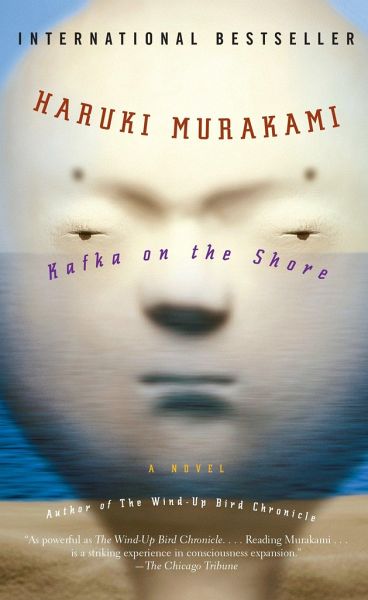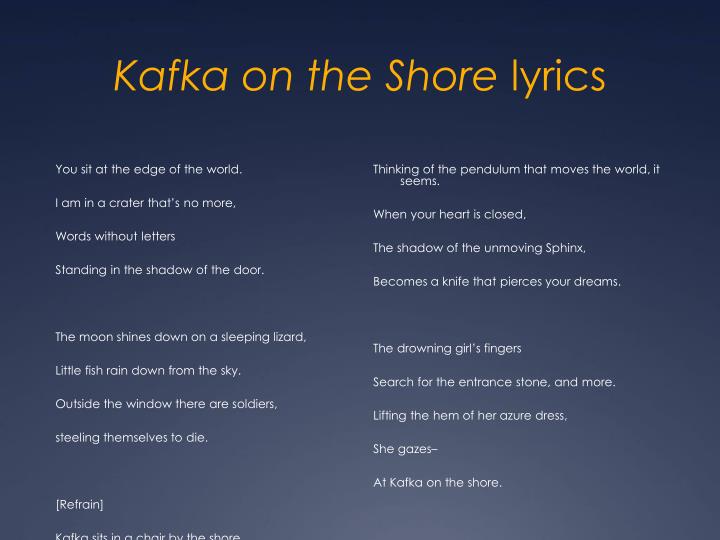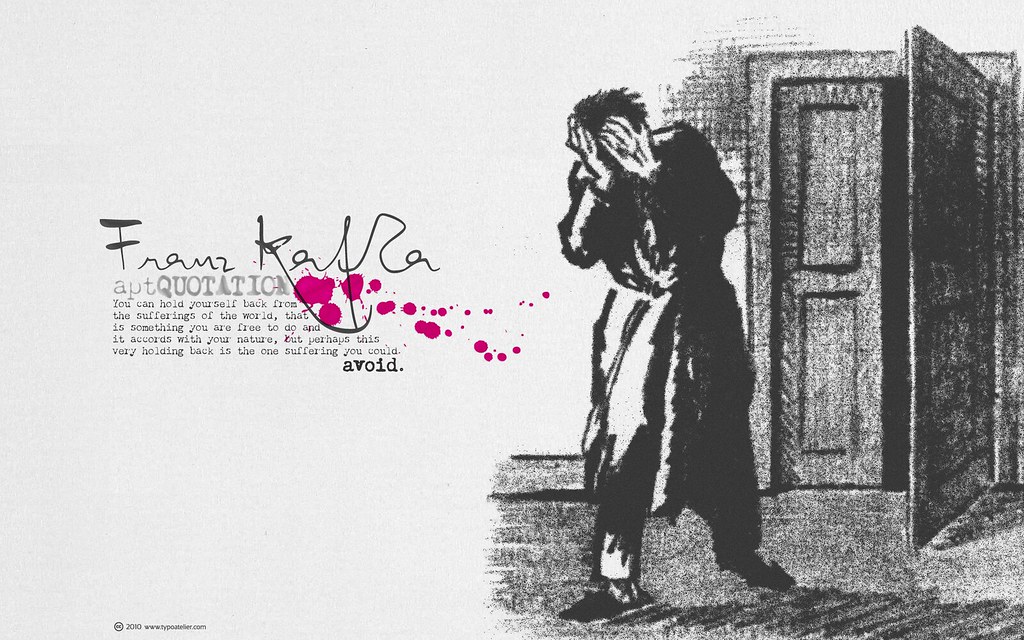

As usual in the case of Murakami music, especially classical music and opera.Audience Surrogate: Hoshino is a pretty normal guy, especially when compared to Kafka and Nakata.

The conversation also opens Kafka to the possibility that he killed his father via astral projection. Oshima brings up several examples of the phenomenon from Japanese classics.

Ever since a strange event during World War II, people from Kafka's and Nakata's town have been known to do this randomly.Asshole Victim: Nakata stabs Johnnie Walker to death.and we're cheering him on the whole way, since Johnnie Walker horrifically mutilates and kills cats which are paralyzed but feel the pain.He pulls this off at least two more times. Asleep for Days: When Hoshino and Nakata arrive in Shikoku, Nakata promptly goes to sleep for 34 hours.Arc Words: Cryptic references to an "entrance stone" start showing up about halfway into the book.

Ambiguously Bi: Kafka is attracted to women, but there's a great deal of subtext surrounding his friendship with Oshima, who is openly gay.Abusive Parents: Kafka's father was emotionally distant and abusive.It begins realistic enough, but soon takes a turn for the surreal and it becomes clear that neither will be having a normal journey. The second follows Nakata, a mentally slow old man who has the ability to talk to cats, as he gets dragged into a journey across Japan running parallel to Kafka's own. The first is about fifteen year-old " Kafka" Tamura who runs away from home in order to avoid fulfilling an oedipal prophecy. Kafka on the Shore (Japanese: 海辺のカフカ, Umibe no Kafuka) is a 2002 novel by Haruki Murakami that features two distinct plots that are nonetheless intertwined. On my fifteenth birthday I’ll run away from home, journey to a far-off town, and live in a corner of a small library. It’d take a week to go into the whole thing, all the details.


 0 kommentar(er)
0 kommentar(er)
